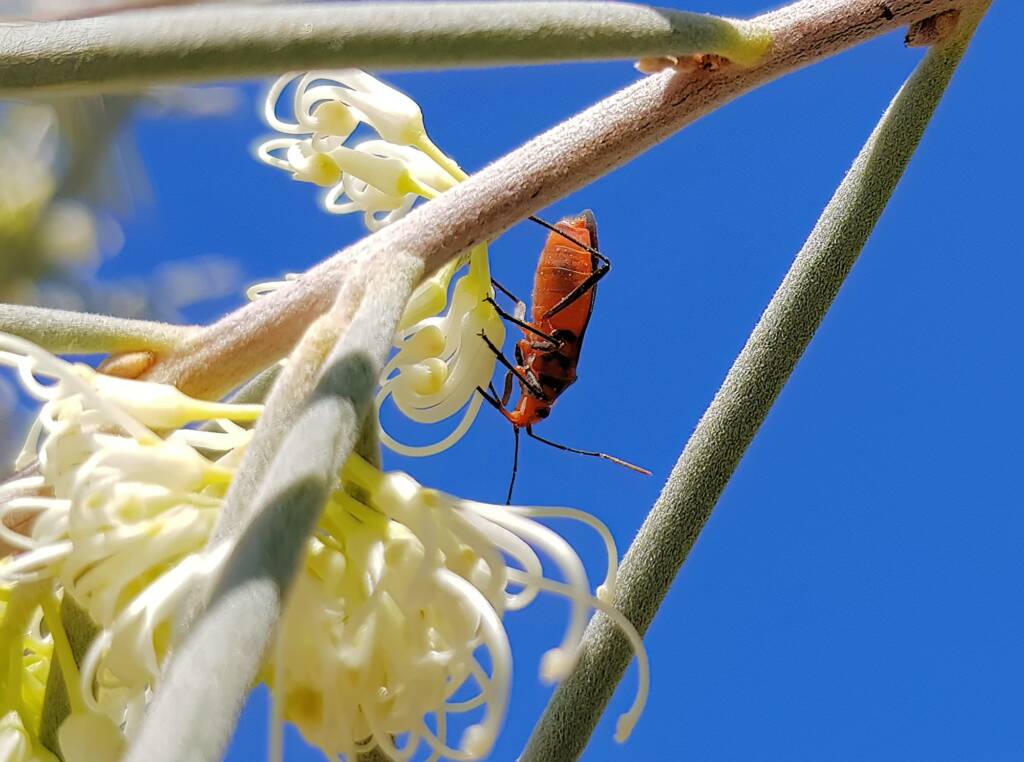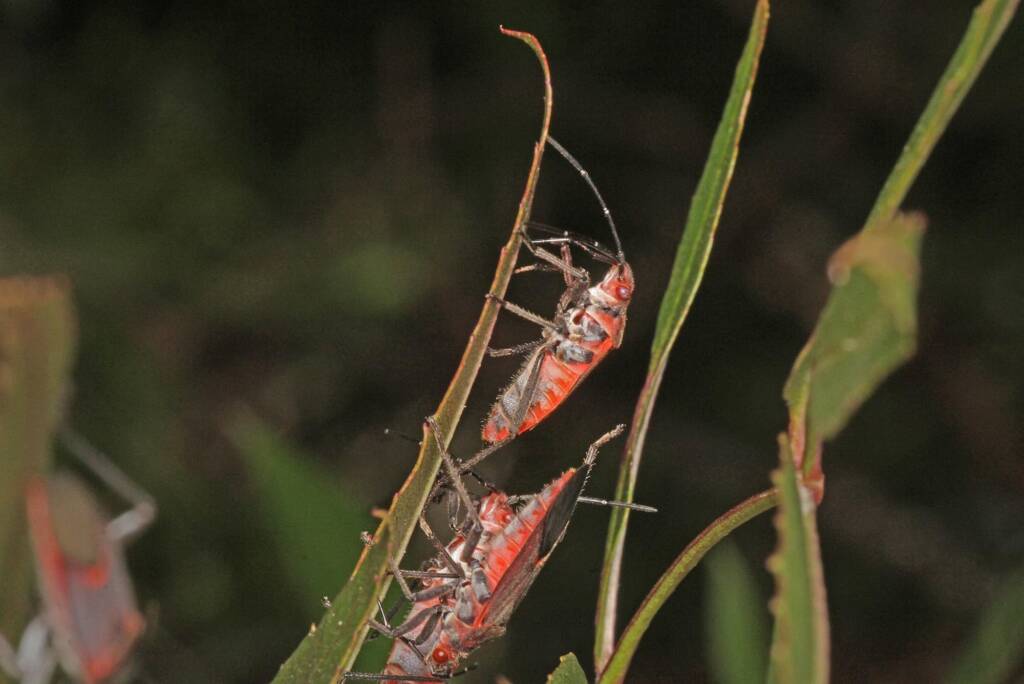LeptocorisLeptocoris mitellatus Leptocoris tagalicus
The commonly named Soapberry Bugs (Leptocoris) is the largest genus of the subfamily Serinethinae that are found throughout Africa, South Asia, and Oceania. They are quite common in Australia, with some specie becoming a nuisance, reaching plague proportions.

Atlas of Living Australia (at time of writing December 2023) has 6 species listed, although there were 41 species described worldwide.
The Leptocoris sp. vary from 9 to 13 mm in length. They are variable in colour (particular patterns, size and colouration can be found within particular regional areas). Their colour is purplish red or brick red, although species that are ochre or dark brown have also been documented. Their membrane and appendages are dark brown to black in colour. The coxae (the first or basal segment of the leg of the insect) are always reddish or yellowish, depending on the overall colour of the Leptocoris. The rostrum (snout-like projection from the heads) barely reaches the fourth abdominal segment.
The Australian Leptocoris tagalicus has been studied as a means of biocontrol for environmental weeds, due to its ability to rapidly adapt to invasive hosts.

Check out the following for more information about some of the Leptocoris spp:
- Scientific classification
- Kingdom: Animalia
- Phylum: Arthropoda
- Subphylum: Hexapoda
- Class: Insecta
- Informal: Pterygotes
- Order: Hemiptera
- Suborder: Heteroptera
- Infraorder: Pentatomomorpha
- Superfamily: Coreoidea
- Family: Rhopalidae
- Subfamily: Serinethinae
- Genus: Leptocoris
- Species:
- Leptocoris isolatus (Distant, 1914)
- Leptocoris mitellatus Bergroth, 1916
- Leptocoris rufomarginatus (Fabricius, 1794)
- Leptocoris subrufescens (Kirby, 1888)
- Leptocoris tagalicus Burmeister, 1834
- Leptocoris vicinus (Dallas, 1852)
Footnote & References
- Leptocoris Hahn, 1833, Atlas of Living Australia, https://bie.ala.org.au/species/https://biodiversity.org.au/afd/taxa/371523cb-5254-40bd-a6f3-61732b91a536
- Leptocoris tagalicus Burmeister, 1834, Atlas of Living Australia, https://bie.ala.org.au/species/https://biodiversity.org.au/afd/taxa/4560f354-1d7e-4ab6-94e5-499261ad4601
- Soapberry Bugs, Ask an Expert, Queensland Museum, https://www.qm.qld.gov.au/Explore/Find+out+about/Ask+an+Expert/Question+of+the+month/Question+Archive/Questions/2009/December+2009#:~:text=Soapberry%20bugs%20do%20not%20feed,and%20then%20pump%20in%20saliva%20.
- Soapberry Bug, Leptocoris tagalicus, Queensland Museum, https://www.qm.qld.gov.au/Explore/Find+out+about/Animals+of+Queensland/Insects/Sucking+Bugs/Common+species/Soapberry+Bug
- Leptocoris, https://en.wikipedia.org/wiki/Leptocoris (last visited Oct. 29, 2022).
- Red Eyes Bug – Leptocoris tagalicus, Brisbane Insects and Spiders, https://brisbaneinsects.com/brisbane_coreidbugs/RedEyesBugs.htm
- Browse Species, Soapberry Bugs of the World, Rhopalidae Serinethinae, http://www.soapberrybug.org/01_cms/details.asp?ID=2
- Leptocoris tagalicus, Soapberry Bugs of the World, Rhopalidae Serinethinae, http://www.soapberrybug.org/01_cms/details.asp?ID=110
LeptocorisLeptocoris mitellatus Leptocoris tagalicus
HemipteraIppatha australiensis Leptocoris Mictis profana (Crusader Bug) Reduviidae Assassin Bugs
InsectsBees Beetles Blattodea Butterflies Coleoptera Cicada Crabronidae Diptera Dragonflies & Damselflies Formicidae Hemiptera Heteroptera (True Bugs) Mango Planthopper Moths Orthoptera Orthopteroid Processionary Caterpillar Stink Bugs, Shield Bugs and Allies Syrphidae Wasps Water Scorpion (Laccotrephes tristis) Witchetty Grub
